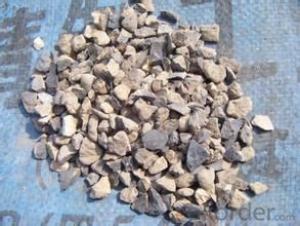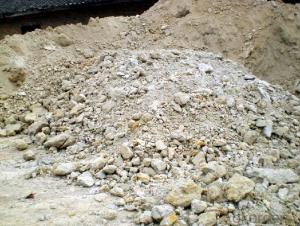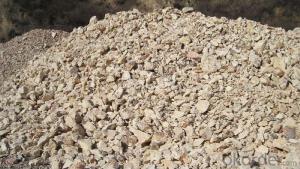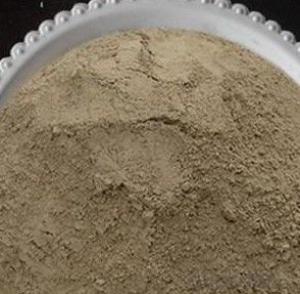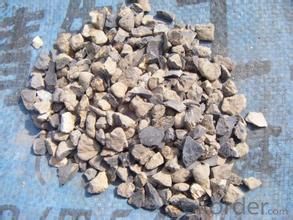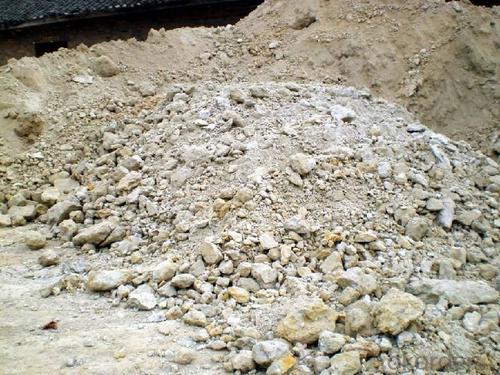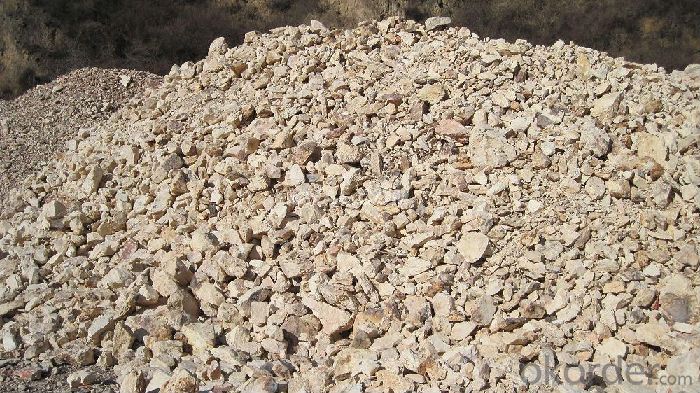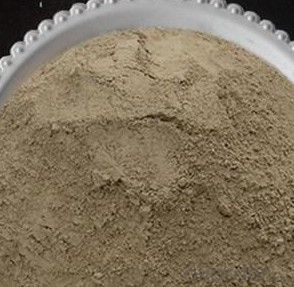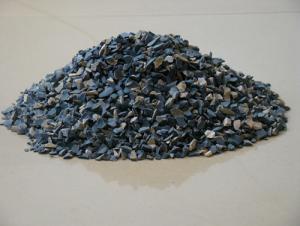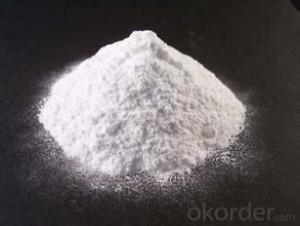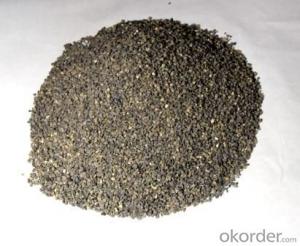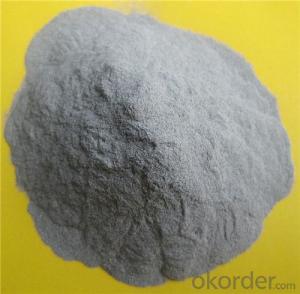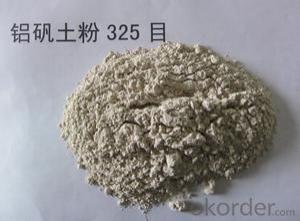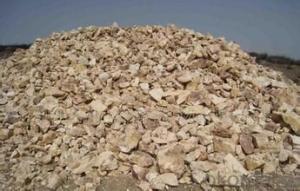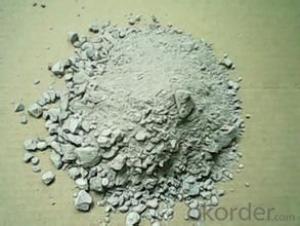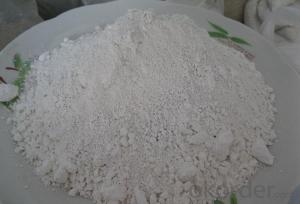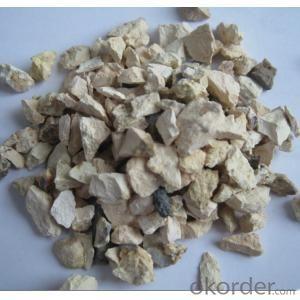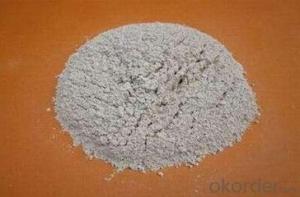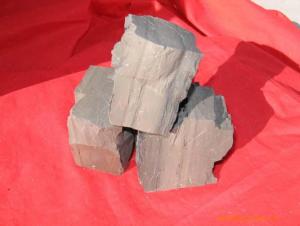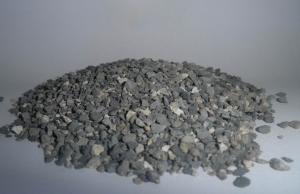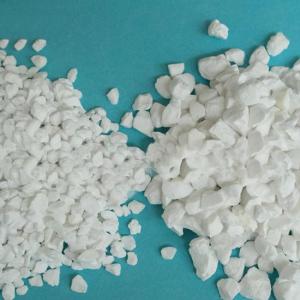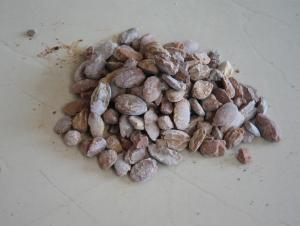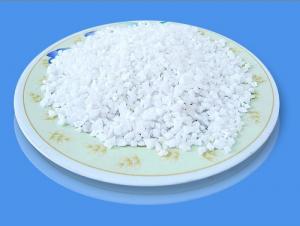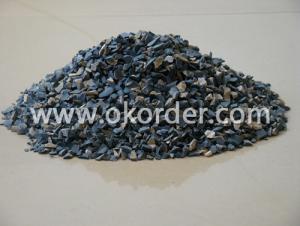89% Rotary/Shaft/Round Kiln Alumina Calcined Bauxite Raw Materials for Refractory
- Loading Port:
- Tianjin
- Payment Terms:
- TT OR LC
- Min Order Qty:
- 25 m.t.
- Supply Capability:
- 30000 m.t./month
OKorder Service Pledge
OKorder Financial Service
You Might Also Like
89% Rotary/ Shaft/ Round Kiln Alumina Calcined Bauxite Refractory Raw Material
Specifications
1. We directly supply calcined bauxite
2. Al2O3:70%/75%/80%/85%/86%/88%/90%
3. Size:0-1-3-5-8-10/200mesh/325mesh/400mesh/500mesh
Size:
Lumps /Grains:0-1mm,1-3mm,3-5mm,5-8mm /Powders:100mesh, 200mesh,325mesh
Product Description:
Bauxite, alumina or bauxite miner , main ingredients are aluminum oxide, hydrate alumina containing impurities,
is an earthy mineral.White or grey, brown yellow or light red by iron.From 4 to 3.9 g/cm3 density, hardness, 1 ~ 3, opaque, very brittle.
Very difficult to melt.Insoluble in water, soluble in sulfuric acid, sodium hydroxide solution.Mainly used for aluminium, refractory material.
Calcined Bauxite Grade:
Shaft Kiln Bauxite
Rotarty Kiln Bauxite
Round Kiln Bauxite
Packaging & Delivery
Packaging Details: In bulk or in 1-1.25mr bag
Product Pictures:
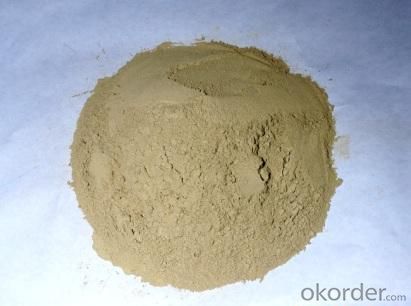
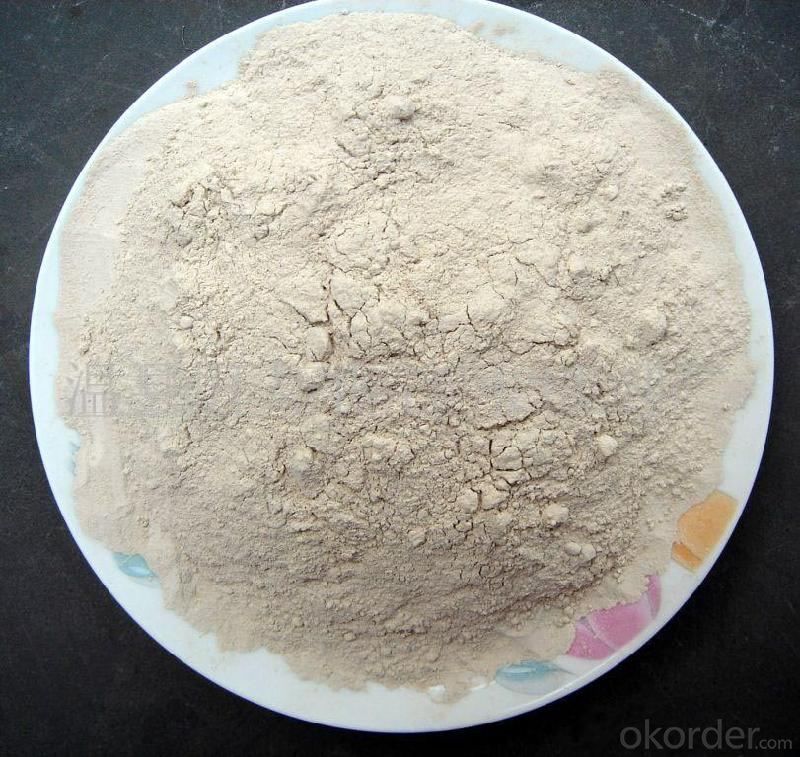
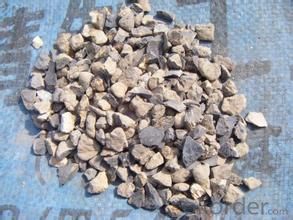
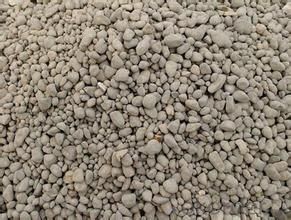
Our Service:
1. Your inquiry related to our products or prices will be replied in 24hours.
2. Manufacturer with large capacity, ensure the fast production cycle after confirmed the order.
3. Our professional technicians will answer your entire enquiry in patient.
4. To meet the refractory solutions, we can serve as your instructions.
5. Protection of sales area and private information for our entire customer.
If you’ve kind enquiries, please don’t hesitate to let us know. ^_^
- Q: What materials is silicious thermal insulation board made of?
- Siliceous insulating panels use quartz sand as the main material and are composited with fiber. Of course the amount of insulation board materials used by different companies is different. In terms of Hua Heng, siliceous insulating boards can be divided into insulating panels for casting slabs and insulation board for intermediate tank according to the usage. The latter one can be divided into liner plate (wallboard, side panels, baseboard) and impingement plate based on parts it is used on. Siliceous insulating panels use quartz sand as the main material and are composited with fiber. Method for manufacturing a silicon insulating panel is divided into semi-dry method and wet method. It is used for casting ingot insulation cap of the killed steel and continuous casting tundish.
- Q: In entering fire door, which material does well?
- About this, I personally advice you to take a look at the building materials market, where will be many options and comparativity would be much better.
- Q: About the market issues of thermal insulation material and refractory material.
- In fact, the thermal insulation material produced by the Sichuan-Benniao Hing construction company is very good, you can get the company's information just by inputing the Sichuan-Benniao Hing construction company into Baidu
- Q: Where is the distributing center of refractory materials in China?
- The construction of Gongyi Chinese refractory chemical industry professional market is a street in Yongan to implement the spirit of the six plenary session of the four session of the Gongyi municipal Party committee, the adjustment of economic structure, an important step in developing the service industry out of the. First, to promote the rapid development of the third industry. Through the improvement of refractory trade logistics system, make Yongan do truly become the first-class refractories trade and logistics center, driven by the refractory industry from the production area to the exhibition, logistics field extension and transformation, become refractory chemical industry center, Yongan office to promote the optimizing and upgrading of economy. Two is to promote intensive land development. Through the integration of resources, the unified planning of the reserved land, intensive development according to the standard of the city, the introduction of powerful investors, construction of large-scale projects. Three is to further create a business atmosphere in Yongan. Refractory chemical professional market operation, will promote the overall development of Yongan to do business, increase the flow of people, logistics, information flow, capital flow, more to promote the rapid development of the third industry in Yongan office.Gongyi Chinese refractory chemical industry professional market completion, will further promote the development of Yongan street service industry, accelerate the pace of economic restructuring, will run the streets of industrial upgrading has played a great role in promoting. Yongan road street is unprecedented high spirited gesture, innovation and development opportunities, so that industrial upgrading and optimization of the pattern to accelerate the realization of, we are convinced that Yongan's tomorrow will be better!
- Q: What is the use of refractory?
- It is fire-retardant and insulated.
- Q: What are the differences and connections between softening temperature of the refractory under a fixed load and thermal resistant creep property of the refractory?
- The result of refractoriness under load is temperature while the result of creep is percentage of deformation. Refractoriness under load and creep can be tested by an instrument. Refractoriness under load reflects the temperature in which the deformation reaches a certain degree under the condition of load. Creep reflects the deformation refractory has under the condition of constant temperature and load. Both refractoriness under load and creep are important criterion for the operating temperature of refractory.
- Q: What refractory material does cupola lining use?
- In order to improve the service life of the lower wall and the bottom leather, dense and high alumina brick can be used for masonry. The front furnace is composed of the bottom, the wall and the top. The top of the furnace is vaulted or hanging flat roof. The front furnace body is usually made of clay brick and high alumina brick, and the bottom work floor is rammed with ramming material. The material is the same as that of cupola furnace. The bridge and the front guard taphole, slag hole and other parts due to erosion by high temperature molten iron and slag erosion, lower service life, frequent repairs. Large blast furnace adopts hot blast or oxygen enriched blast, which has higher temperature and higher production capacity... The damage is faster, and it is hard to maintain production by using clay brick or high alumina brick. Should be used aluminum, carbon or corundum refractory silicon carbide castables pouring or tamping, so that the integrity of good, high strength, corrosion resistance, and therefore significantly improved service life, generally up to one year or so. Refractory materials, including chimneys and spark traps, are used in other parts of the cupola. The chimney and the cupola shaft directly connected with the shell made of steel plate, lined with ordinary clay brick, can also be used ordinary refractory castable pouring. The chimney is provided with a furnace heat exchanger, which can preheat the air to 300~500 DEG C, and the spark collector is used for catching the hot coke and dust particles brought out in the flue gas. The chimney at the top of the reflector (cover) by plate welding, can also be used to cast iron, its lining refractory coating or spraying paint.
- Q: What kind of refractories do the anode baking furnace use?
- 5% volume density. 2 , The application results show that it has the energy-saving effect. 4, Withstand voltage strength. The 50MPa prebaked anode baking furnace furnace wall replaces traditional small special-shaped brick with steel fibre reinforced castable precast block: The aluminum content is 45-60%. The iron content is less than 1. I know someone uses andalusite bricks. This method, under the condition of not changing the roasting technique , has excellent resistance to CO. If there are investors, you can complete the overhaul and reconstruction work of anode baking furnace, which is still a precedent in the country. The andalusite bricks are significantly better than clay bricks. The volume density of 5% of it is 2.25. The compressive strength of 40MPa aluminum content is 60%, and the iron content is less than 1. The andalusite is more denser in the structure. Physical and chemical indicators are as following: it has a good anti-corrosive of exhaust gas Na2O. This is because its chemical composition and mineral composition are very suitable for anode baking furnace, which has long life and easy construction and other characteristics.
- Q: Does anyone know what is the use of waste refractory materials?
- Waste refractory materials can be 1, Recycled to do the aggregate and powder of castable , or make bricks. 2, can be reused after smash.3, Metal silicon is an anti oxidant in refractory material, mainly functioning as he oxidation resistance, at the same time improve its toughness.
- Q: What are the components of refractory clay?
- The component of refractory mortar comprises refractory powder, binders and admixtures. Almost all the refractory materials can be used as the powder to formulate refractory mortar. Ordinary refractory mortar is made from refractory chamotte powder, an appropriate amount of plastic clay as binding agent and plasticizer. It has low strength under normal temperature, but the ceramic formed under high temperature has a high strength. Refractory mortar which is formed with bonding material of hydraulicity, gas or thermal hardness is called chemical binding chamotte refractory mortar. It is hradened through chemical reaction before below the temperature of ceramic bonding formation.
Send your message to us
89% Rotary/Shaft/Round Kiln Alumina Calcined Bauxite Raw Materials for Refractory
- Loading Port:
- Tianjin
- Payment Terms:
- TT OR LC
- Min Order Qty:
- 25 m.t.
- Supply Capability:
- 30000 m.t./month
OKorder Service Pledge
OKorder Financial Service
Similar products
Hot products
Hot Searches
Related keywords
